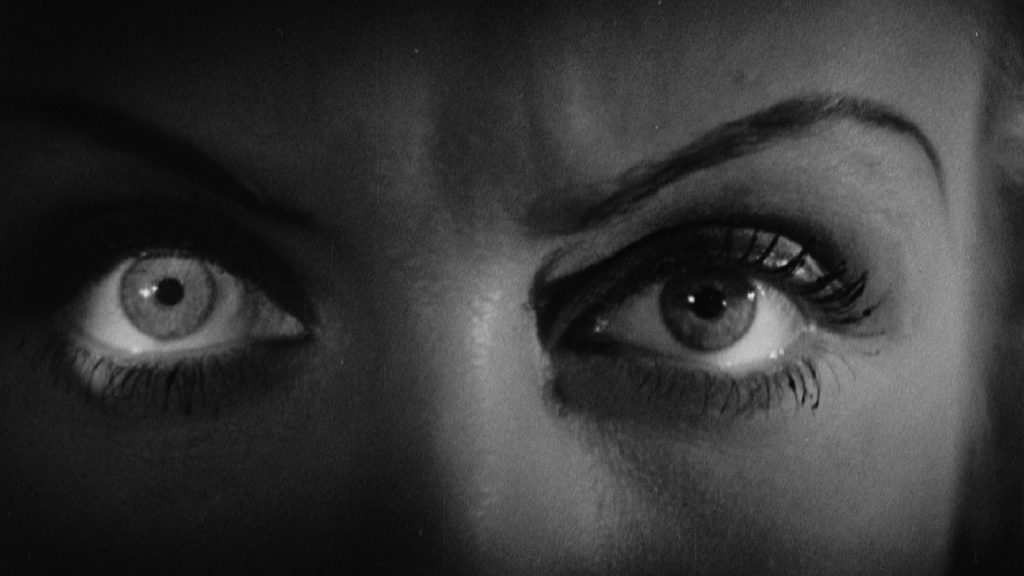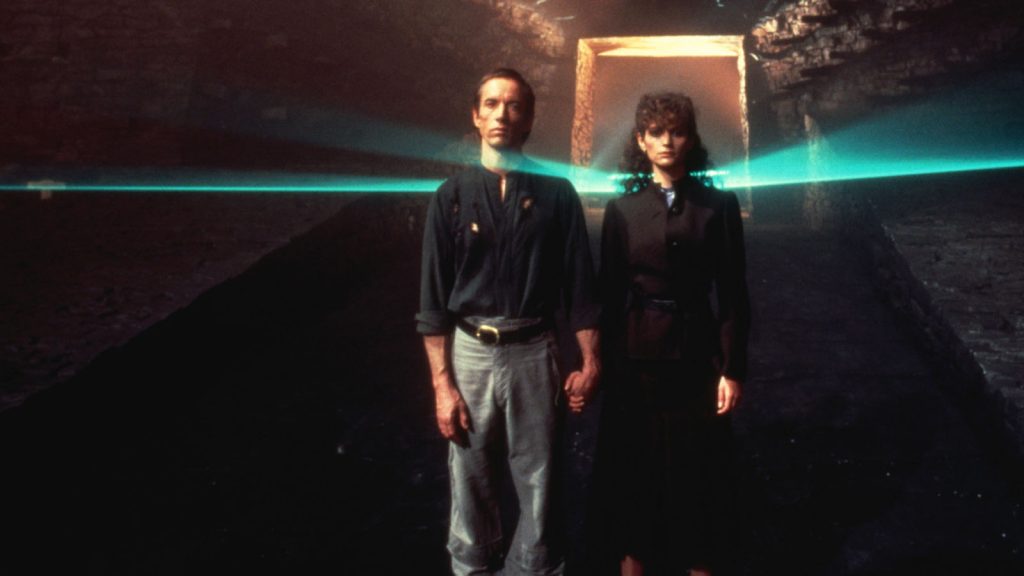
Quality, mid-century animated horror can be a bit like a top-grade Sun Ra album or an Abstract Expressionist sculpture. That is, you don’t know when it might be from, and find it both surprising and sensical when you’re apprised of the date. Edgar Allan Poe was an artist who believed in the short form. If it took a reader longer than one sitting to get through the work, chances were the author had done something wrong. And while there probably haven’t been too many people who’ve powered through Poe’s lone novel, The Narrative of Arthur Gordon Pym, in a single go, it’s not outside of the realm of possibility to do so.
In 1953, United Productions of America (UPA) made a seven-and-a-half-minute animated adaptation of Poe’s 1843 story, “The Tell-Tale Heart.” James Mason narrated, with Paul Julian serving as designer and color artist, Pat Matthews as principal animator, and Ted Parmelee directing. Bill Scott and Fred Grable wrote the screenplay. Together, they created a film that was once a middle-school staple and numbers among the most effective horror works this country has produced—you wouldn’t be remiss to put it in the same league as some of Poe’s tales in their prose form.
Mason is perfectly cast in what is one of his finest roles. His narrator describes the old man with the dead eye that haunts him, and what a sight that eye is in this short. It looks like a hard-boiled egg that’s been left out for a few days. An object—such as the narrator’s own body—will pass in front of the old man, blocking him from our view, but we see how his good eye has moved from left to right as it follows the movement of this other individual, who is now out of the way, with the dead eye remaining in place.
The narrator’s duress increases. He cannot stop fixating. Again and again, he states his case to us regarding his sanity. Consider how focused he is, he says. How patient. We are privy to his projected prejudices and disgusts, as when he looks at the old man’s visage and the dead eye gives way to this horrible skein of snakelike nerves. The nerves, in turn, morph into a throbbing ganglion. A cyst that must be punctured to release its befouled contents.
Movement is paramount. There’s precious little stasis in the short. Our own eyes are directed hither and yon. Left to right, up and down. From the bottom corner of the screen to the top at the other side. We get assemblages of images. Juxtapositions of symbols that are also literal parts of the story. We know—or we should—how the story goes: the old man’s beating heart becomes a problem for the narrator as well, becoming ever louder, throbbing—with us made to think that something hideous throbs within the eye, too—until the narrator can take it no more and strikes the old man dead.
There’s a scream. The police arrive. Somewhere in the interval between death and that knock on the narrator’s door, the body has been stashed. The police are apologetic. Screams must be investigated, they say. But the narrator is grateful for the company. He wishes to play host. To have a very strange hangout session. And as you also probably know, he gives himself away, because such is guilt or madness, which Poe—and this short—link as one, a troubling, depressing suggestion. Is sanity not caring and doing whatever you need to get away with it?
The house resembles the one lived in by Scrooge in Brian Desmond Hurst’s 1951 adaptation of A Christmas Carol. It’s plainly a haunted house, which could be from that era. Or from some futuristic state. There’s dust and glow. Evidence of the past and this sort of shine—as if coming off some metal found only on Mars—of that which has yet to come. In Parmalee’s film, we aren’t exactly sure of the relationship between these two main characters. They’re not roommates, or are they? Is the narrator a catamite? Does his guilt and obsession stem from a relationship of pederasty? Does he think himself unclean and impure as a result?
The dead eye is indeed seminal—it looks full to bursting with something. Pus. Fetid, accumulated semen like so much milk gone bad. There’s quite a bit happening in less than 500 seconds, which doesn’t mean anything is unclear. Or it shouldn’t be, if the viewer is willing to think and can make some connections between images. The prickly Poe probably would have loved the film himself. It is, after all, typical of the beating heart of his own most essential work. 🩸

is the author of eight books, including the story collection, If You [ ]: Fabula, Fantasy, F**kery, Hope, a 33 1/3 volume on Sam Cooke’s Live at the Harlem Square Club, 1963, Meatheads Say the Realest Things: A Satirical (Short) Novel of the Last Bro, and a book about 1951’s Scrooge as the ultimate horror film. His work has appeared in Harper’s, The Atlantic, Rolling Stone, The New York Times, Vanity Fair, The Daily Beast, Cineaste, Film Comment, Sight and Sound, JazzTimes, The New Yorker, The Guardian, and many other venues. He’s completing a book called And the Skin Was Gone: Essays on Works of Horror Art. His website is colinfleminglit.com, where he maintains the Many Moments More journal, which, at 2.7 million words and counting as of autumn 2023, is the longest sustained work of literature in history.
To love Hammer horror films is to love the look of them and probably also have an abiding affection for the fall, given that it always seems to be autumn in the world of Hammer.
BY COLIN FLEMING | November 2, 2025
Upon initial considerations, lovers of horror films might not strike us as romantics.
BY COLIN FLEMING | February 10, 2025
Meet the right ghosts in your formative years—or help someone else to do the same in theirs—and a lifelong love of the stories and films in which they feature may be the result.
BY COLIN FLEMING | October 31, 2025

This pre-Code offering packs a lot of story into its typically brisk running time, with several plot threads weaving together a (not always successful) tapestry of spooky and criminal doings.
READ MORE >
BY ANN OLSSON | Month 00, 2021

In what could be the fastest-resulting rape revenge movie, a drunken lout brutally forces himself on Ida, the young woman who doesn't return his affections, during a party over Labor Day.
READ MORE >
BY LAURA KERN | Month 00, 2021

Beast is a lot of movies in one package - fractured fairy tale, belated-coming-of-age story, psychological drama, regional horror film - but above all it's a calling card for its leading lady, Jessie Buckley.
READ MORE >
BY LAURA KERN | Month 00, 2021